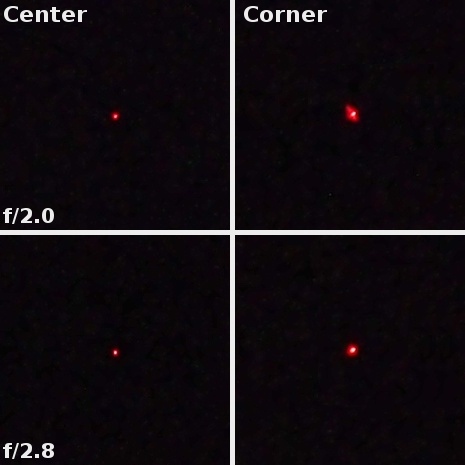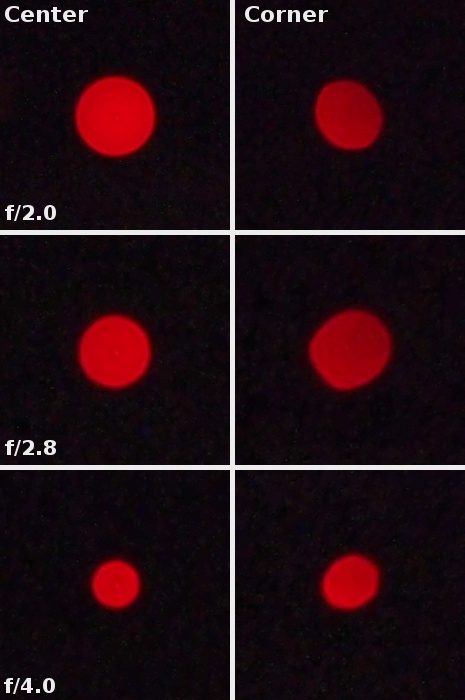Olympus M.Zuiko Digital 12 mm f/2.0 ED
7. Coma, astigmatism and bokeh

The astigmatism of the tested lens can be described as medium at most. The average difference between vertical and horizontal MTF50 function values amounts to 9%.
Please Support UsIf you enjoy our reviews and articles, and you want us to continue our work please, support our website by donating through PayPal. The funds are going to be used for paying our editorial team, renting servers, and equipping our testing studio; only that way we will be able to continue providing you interesting content for free. |
- - - - - - - - - - - - - - - - - - - - - - - - - - - - - - - - - - - - - - - - - - - - - - - -
Below we also present some off-focus images of a point-like diode which might help you to assess how the lens renders fuzziness.







